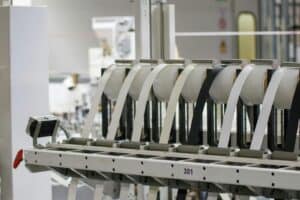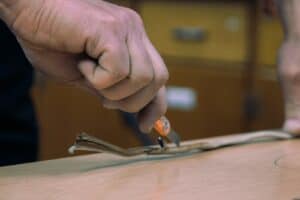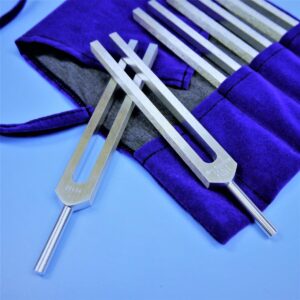Introduction: What You Need to Know
A stainless steel bar is a solid, long piece of stainless steel that comes in different shapes like round, square, hexagonal, or flat. While this sounds simple, choosing the right stainless steel bar requires careful thinking. Picking the wrong type isn’t just a small mistake – it can cause serious problems like early failure, extra costs, and safety risks. The difference between a structure that lasts for decades and one that breaks down in months often depends on understanding the material well.
This guide goes beyond basic descriptions. We will examine the material from its core makeup to how it performs under stress in real situations. For engineers, buyers, or builders, this knowledge isn’t just theory – it’s essential for making sure a project succeeds. Understanding how chemical makeup, manufacturing methods, and strength properties work together is key to getting the most out of a stainless steel bar. This ensures it will be durable, resist rust, and maintain its strength in its intended use. This analysis connects the numbers on a data sheet to a reliable part in an important system.
The Basic Chemistry
The word “stainless” describes how well the material performs, not a perfect state. The material’s amazing ability to resist rust isn’t natural to iron but is created through careful mixing of other metals. Understanding this chemical foundation is the first step in choosing the right material and predicting how it will behave in service. The properties of any stainless steel bar depend on its recipe of elements.

Why Chromium Matters
The most important element in stainless steel is chromium (Cr). For steel to be called stainless, it must contain at least 10.5% chromium by weight. This element is what makes the material “passive.” When exposed to oxygen in air or water, the chromium at the steel’s surface reacts to form a very thin, stable, and tough layer of chromium oxide (Cr₂O₃).
This passive layer is the material’s main protection against rust. It’s invisible to the naked eye, measuring only a few nanometers thick, but it works incredibly well. Most importantly, if the surface gets scratched or damaged, the layer fixes itself. As long as oxygen is present, the exposed chromium will immediately react to rebuild the protective oxide film, restoring its rust resistance. This active, self-repairing system is what truly defines stainless steel.
Important Added Elements
While chromium provides the basic rust resistance, other elements are added to customize the steel’s properties for specific needs, such as better rust resistance, improved strength, or easier shaping.
- Nickel (Ni): Mainly used to stabilize the austenitic crystal structure at room temperature. This austenitic phase gives grades like 304 and 316 their excellent ability to bend, form, and resist breaking, even at very cold temperatures. Nickel also helps resist certain acids and improves strength at high temperatures.
- Molybdenum (Mo): This is a critical addition for significantly improving resistance to localized rust, particularly pitting and crevice corrosion in salty environments like seawater or road salt. This is the key element that makes Grade 316 different from Grade 304.
- Manganese (Mn): An austenite stabilizer, manganese is often used to supplement or, in some grades (like the 200 series), partially replace nickel for cost reasons. It also improves strength and hardness.
- Carbon (C): Carbon is a powerful strengthening agent and increases hardness. However, in stainless steels, it can hurt rust resistance. If carbon content is too high, it can combine with chromium to form chromium carbides at the grain boundaries during welding or traitement thermique. This process, called sensitization, removes chromium from the surrounding area that’s needed to maintain the passive layer, making it vulnerable to intergranular corrosion. To prevent this, low-carbon “L” grades (e.g., 304L, 316L) with a maximum of 0.03% carbon are specified for welded applications.

Table 1: Chemical Composition Comparison
This table shows the typical compositions for common stainless steel bar grades, illustrating the direct link between added elements and a grade’s family and performance characteristics.
| Stainless Steel Family | Example Grade | Typical Chromium (Cr) % | Typical Nickel (Ni) % | Typical Molybdenum (Mo) % | Typical Carbon (C) % |
| Austenitic | 304 | 18.0 – 20.0 | 8.0 – 10.5 | – | < 0.08 |
| Austenitic | 316 | 16.0 – 18.0 | 10.0 – 14.0 | 2.0 – 3.0 | < 0.08 |
| Ferritic | 430 | 16.0 – 18.0 | – | – | < 0.12 |
| Martensitic | 410 | 11.5 – 13.5 | – | – | < 0.15 |
| Duplex (Aust-Ferritic) | 2205 | 22.0 – 23.0 | 4.5 – 6.5 | 3.0 – 3.5 | < 0.03 |
How Bars Are Made
The journey of a stainless steel bar from raw material to finished product involves manufacturing processes that greatly affect its final size, surface finish, and strength properties. The two main methods are hot rolling and cold finishing. The choice between them isn’t random; it’s an important design decision based on what the application needs for precision, strength, and appearance.
Hot Rolling: The Foundation Process
Hot rolling is the basic process for making stainless steel bars. It involves heating a steel billet to a temperature above its recrystallization point – typically over 1,100°C (2,012°F) – and passing it through a series of rollers that gradually shape it into the desired cross-section.
- Process: The high temperature makes the steel very bendable, allowing for significant size and shape reduction with relative ease and lower energy use compared to cold working.
- Resulting Properties: The process refines the grain structure but results in lower strength and hardness compared to a cold-worked equivalent. The bar has minimal internal stresses, making it relatively stable.
- Surface Finish: As the bar cools, a dark, rough scale forms on the surface. This is typically removed through annealing (a traitement thermique to soften the steel and improve bendability) and pickling (an acid bath to remove the scale). The resulting finish is known as Hot-Rolled, Annealed, and Pickled (HRAP). It is clean but has a dull, matte, and slightly rough texture.
- Size Accuracy: Due to thermal shrinkage and the nature of the process, hot-rolled bars have less precise dimensions and wider tolerances on size and straightness.
- Typical Uses: Hot-rolled stainless steel bars are ideal for structural applications, supports, and general fabrication where tight size accuracy and a fine surface finish are not main concerns. They serve as the matière première for many machined and forged parts.

Cold Finishing: Precision and Strength
Cold finishing is a secondary process performed on a previously hot-rolled bar. The key difference is that all work is done at room temperature, below the steel’s recrystallization temperature. The most common method is cold drawing, where a hot-rolled bar is pulled through a precision die that is smaller than the bar’s original diameter. Other methods include grinding and polishing for even finer finishes and tolerances.
In fabrication shops, we often see problems when a designer specifies a hot-rolled bar for a high-precision CNC machining job. The loose tolerances and rough surface can lead to machining challenges, increased tool wear, and inconsistent final parts. This is a classic case where a cold-drawn bar would have been the correct choice from the start, saving time and ensuring part-to-part consistency.
- Process: The mechanical action of drawing the bar through the die plastically deforms the steel. This process is known as work hardening or strain hardening.
- Resulting Properties: Work hardening significantly increases the bar’s tensile strength and hardness. This gain in strength comes at the cost of reduced bendability; the bar becomes less formable.
- Surface Finish: Cold-finished bars have a smooth, bright, and often reflective surface, commonly called Cold Drawn (CD) or Bright Drawn.
- Size Accuracy: The use of a precision die results in highly accurate and consistent dimensions, tight tolerances, and excellent straightness.
- Typical Uses: The superior finish, tight tolerances, and increased strength make cold-finished stainless steel bars the preferred choice for high-speed machining, pump shafts, valves, fasteners, bearings, and any component requiring precision and a smooth surface.
Table 2: Hot-Rolled vs. Cold-Finished
This table provides a direct technical comparison between the two manufacturing processes, serving as a quick reference for specification.
| Attribute | Hot-Rolled Bar (HRAP) | Cold-Finished Bar (CD) |
| Résistance à la traction | Plus bas | Higher (Increased by work hardening) |
| Dureté | Plus bas | Plus élevé |
| Size Accuracy | Wider tolerances (+/-) | Tighter tolerances (+/-) |
| Finition de la surface | Dull, matte, slightly rough (scale removed) | Smooth, bright, can be reflective |
| Straightness | Good, but less precise | Excellent, highly controlled |
| Relative Cost | Lower (less processing) | Higher (additional manufacturing steps) |
| Internal Stress | Faible | High (can cause warping if asymmetrically machined) |
Strength Properties Under Load
An engineer designs based on numbers. The chemical makeup and manufacturing process of a stainless steel bar result in a set of measurable strength properties. These values, typically found on a Material Test Certificate (MTC) or Mill Test Report (MTR), are not just data points; they are the language of performance. They tell us how the bar will behave under load, how it will bend, and when it will fail. A thorough understanding of these measurements is essential for safe and efficient design. These properties are measured according to globally recognized standards, most commonly ASTM A276 (Standard Specification for Stainless Steel Bars and Shapes) and ASTM A479 (for boiler and pressure vessel applications).
Résistance à la traction
Tensile strength measures the material’s resistance to being pulled apart. It is determined by a tensile test where a sample bar is stretched until it breaks. Two key values come from this test:
- Yield Strength (0.2% Offset): This is the stress at which the material begins to deform permanently, meaning it will not return to its original shape after the load is removed. For most structural and mechanical design, yield strength is the most critical parameter. Components are designed to operate at stresses safely below the yield strength to prevent permanent bending.
- Ultimate Tensile Strength (UTS): This is the maximum stress the material can withstand while being stretched or pulled before it begins to neck down and eventually break. While UTS indicates the material’s absolute maximum strength, designing close to this limit is risky as the part would have already undergone significant, permanent bending.

Bendability
Bendability is a measure of a material’s ability to undergo significant permanent bending before breaking. It is the property that allows a bar to be bent, formed, or drawn into a new shape without breaking. In a tensile test, bendability is measured in two primary ways:
- Elongation: Expressed as a percentage, this is the measure of how much the sample stretched from its original length before it broke. A higher percentage indicates greater bendability.
- Reduction of Area: Also expressed as a percentage, this measures how much the cross-sectional area of the bar decreased at the point of fracture.
High bendability is crucial for applications involving cold forming (like bending rebar) and for components that need to absorb impact energy by bending rather than shattering.
Dureté
Hardness is the material’s ability to resist localized permanent bending, such as scratching, wearing, or denting. It is a key indicator of wear resistance. A harder material is more difficult to machine but will perform better in applications where it is subject to friction or contact with other surfaces. Hardness is typically measured using indentation tests, with the results reported on scales like Rockwell (HRC or HRB) or Brinell (HBW). The hardness of a stainless steel bar is directly influenced by its carbon content and whether it has been work-hardened (cold-drawn) or heat-treated (in the case of martensitic grades).
Impact Resistance
Impact resistance, or toughness, is the material’s ability to absorb energy and bend permanently under a sudden, high-rate load (an impact). It is different from strength. A very strong material can be brittle, meaning it will break with little to no bending when struck. Toughness is especially critical for applications in cold environments, as many materials become more brittle at lower temperatures. The standard test for impact resistance is the Charpy V-notch test. A small, notched sample is struck by a weighted pendulum, and the energy absorbed by the sample during fracture is measured. A higher absorbed energy value indicates greater toughness. Austenitic stainless steels like 304 and 316 are known for their excellent toughness, even at very cold temperatures.
Understanding Rust Resistance
The primary reason for choosing a stainless steel bar is its rust resistance. However, saying that “stainless steel does not rust” is a dangerous oversimplification. All stainless steels can corrode under certain conditions. The real engineering challenge is to understand the specific types of corrosion and select a grade that can resist them in the intended service environment. Failure often occurs not through uniform thinning, but through sneaky, localized attacks that can lead to rapid and unexpected component failure.
Beyond General Corrosion
General, or uniform, corrosion is a relatively predictable process where the entire surface of the steel corrodes at a slow, uniform rate. This is less of a concern for most stainless steels in typical environments. The far greater threat comes from localized corrosion, which attacks the material at specific points, often at a faster rate.
Pitting Corrosion
Pitting is a highly localized form of corrosion that leads to the creation of small holes, or “pits,” in the metal surface. It is one of the most destructive forms of corrosion and can be difficult to detect before it causes holes completely through the material. Pitting is most commonly started by chloride ions (Cl⁻), which are common in marine environments, de-icing salts, and certain industrial chemicals. These ions can locally break down the passive layer, creating an aggressive, self-sustaining micro-environment within the pit. Molybdenum is the key element that enhances resistance to pitting. This is why Grade 316, with its 2-3% molybdenum content, is vastly superior to Grade 304 in any chloride-containing environment.
Crevice Corrosion
Crevice corrosion is another form of localized attack that occurs in stagnant micro-environments, or crevices. These can be found under bolt heads, beneath gaskets, in lap joints, or any tight gap where the free flow of oxygen is restricted. Inside the crevice, the oxygen is consumed, preventing the passive layer from self-healing. This oxygen-depleted zone becomes anodic, while the surrounding, oxygen-rich surface becomes cathodic, creating a corrosion cell that aggressively attacks the metal within the crevice. Like pitting, crevice corrosion is made worse by chlorides and is best resisted by grades containing molybdenum, such as 316L or duplex stainless steels.
Stress Corrosion Cracking
Stress Corrosion Cracking (SCC) is a particularly dangerous failure mode as it can occur with little to no visible sign of general corrosion. It results from the combined action of three factors: a susceptible material, a specific corrosive environment, and a tensile stress (which can be an applied load or leftover stress from manufacturing). For the common austenitic stainless steels (300 series), the classic environment for SCC is one containing hot chlorides (generally above 60°C or 140°F). The cracking can spread rapidly through the material, leading to sudden, catastrophic failure of the component. When SCC is a known risk, engineers often specify duplex stainless steels (like 2205) or high-nickel alloys, which offer significantly greater resistance.
Le guide de sélection
Le meilleur choix d'une barre en acier inoxydable est rarement l'option la plus chère ou la plus fortement alliée. Il s'agit d'un équilibre soigneusement étudié entre les performances techniques, l'exposition à l'environnement, la facilité de fabrication et le coût total du cycle de vie. En combinant les principes chimiques, de fabrication et mécaniques abordés, nous pouvons construire une barre en acier inoxydable. cadre pratique pour guider le processus de sélection des applications courantes. Ce guide sert de point de départ au processus de prise de décision en matière d'ingénierie.
Tableau 3 : Guide de sélection en fonction de l'application
Ce tableau établit un lien entre les applications courantes et les qualités d'acier inoxydable recommandées, en expliquant les raisons techniques de chaque choix.
| Application/Environnement | Défi(s) principal(aux) | Année(s) d'études recommandée(s) | Raisonnement technique (Pourquoi ?) |
| Architecture générale et structure | Aspect, résistance à la corrosion atmosphérique, coût | 304 / 304L | La qualité de base. Offre une excellente résistance à la corrosion dans la plupart des conditions atmosphériques. Rentable et facilement disponible. La nuance 304L est spécifiée pour les structures soudées. |
| Transformation des aliments et des boissons | Hygiène, nettoyabilité, résistance aux agents désinfectants | 304 / 304L, 316/316L | Le 304L est suffisant pour la plupart des applications. Le 316L est nécessaire lorsque des agents de nettoyage plus agressifs ou des produits salés ou bruns sont utilisés, afin d'éviter la formation de piqûres. |
| Quincaillerie marine et structures côtières | Pulvérisation d'eau salée, forte concentration de chlorure | 316 / 316L, 2205 | 316L est la norme minimale pour les environnements marins en raison de sa teneur en molybdène qui résiste aux piqûres de chlorure. Le Duplex 2205 offre une solidité supérieure et une résistance encore meilleure aux piqûres et à la corrosion sous tension. |
| Arbres de pompe et composants de vannes | Solidité, résistance à l'usure, précision, corrosion | Finition à froid 316/316L, 410 (trempé), 17-4 PH | Le 316L fini à froid offre une bonne résistance à la corrosion et une bonne solidité. Le 410 trempé offre une excellente résistance à l'usure mais une moindre résistance à la corrosion. Le 17-4 PH offre une excellente combinaison de haute résistance mécanique et de bonne résistance à la corrosion. |
| Pièces pour fours à haute température | Résistance à l'oxydation, résistance à haute température (fluage) | 310S, 309S | Ces nuances ont une teneur élevée en chrome et en nickel, ce qui forme une couche très adhérente qui résiste à l'oxydation et offre une bonne résistance à des températures élevées. |
| Usine de traitement chimique | Résistance à des produits chimiques et acides spécifiques et agressifs | 2205, Super Duplex, Alliages de nickel | Le choix dépend fortement du produit chimique spécifique, de la concentration et de la température. Les nuances duplex offrent une large résistance. Pour les milieux les plus agressifs, des alliages à haute teneur en nickel sont nécessaires. |
Conclusion : Mettre les connaissances au travail
Nous sommes allés de la chimie fondamentale qui rend l'acier "inoxydable" aux processus de fabrication qui définissent la forme et la résistance d'une barre, en passant par les propriétés mécaniques critiques qui dictent son comportement sous charge. Nous avons analysé comment et pourquoi l'acier est défaillant et, enfin, nous avons combiné ces connaissances dans un cadre de sélection pratique. Cette analyse complète renforce un principe fondamental : une barre en acier inoxydable n'est pas un simple produit. Il s'agit d'un composant hautement technique dont les performances sont directement liées à une compréhension approfondie de ses caractéristiques techniques. Une analyse approfondie est la clé qui permet de libérer tout son potentiel et de garantir la sécurité, la longévité et le succès opérationnel de tout projet dans lequel elle est utilisée.
- Acier inoxydable - Wikipédia https://en.wikipedia.org/wiki/Stainless_steel
- SSINA - Industrie des aciers spéciaux d'Amérique du Nord https://www.ssina.com/
- Institut américain de la construction métallique (AISC) https://www.aisc.org/technical-resources/
- Association mondiale de l'acier inoxydable https://worldstainless.org
- ASTM International - Magasin des normes https://store.astm.org/
- Association britannique de l'acier inoxydable (BSSA) https://bssa.org.uk/
- Institut du nickel https://nickelinstitute.org/
- Outokumpu - Types d'acier inoxydable https://www.outokumpu.com/en/products/stainless-steel-types
- Total Materia https://www.totalmateria.com/
- Équipe Inox https://www.teamstainless.org/resources/




